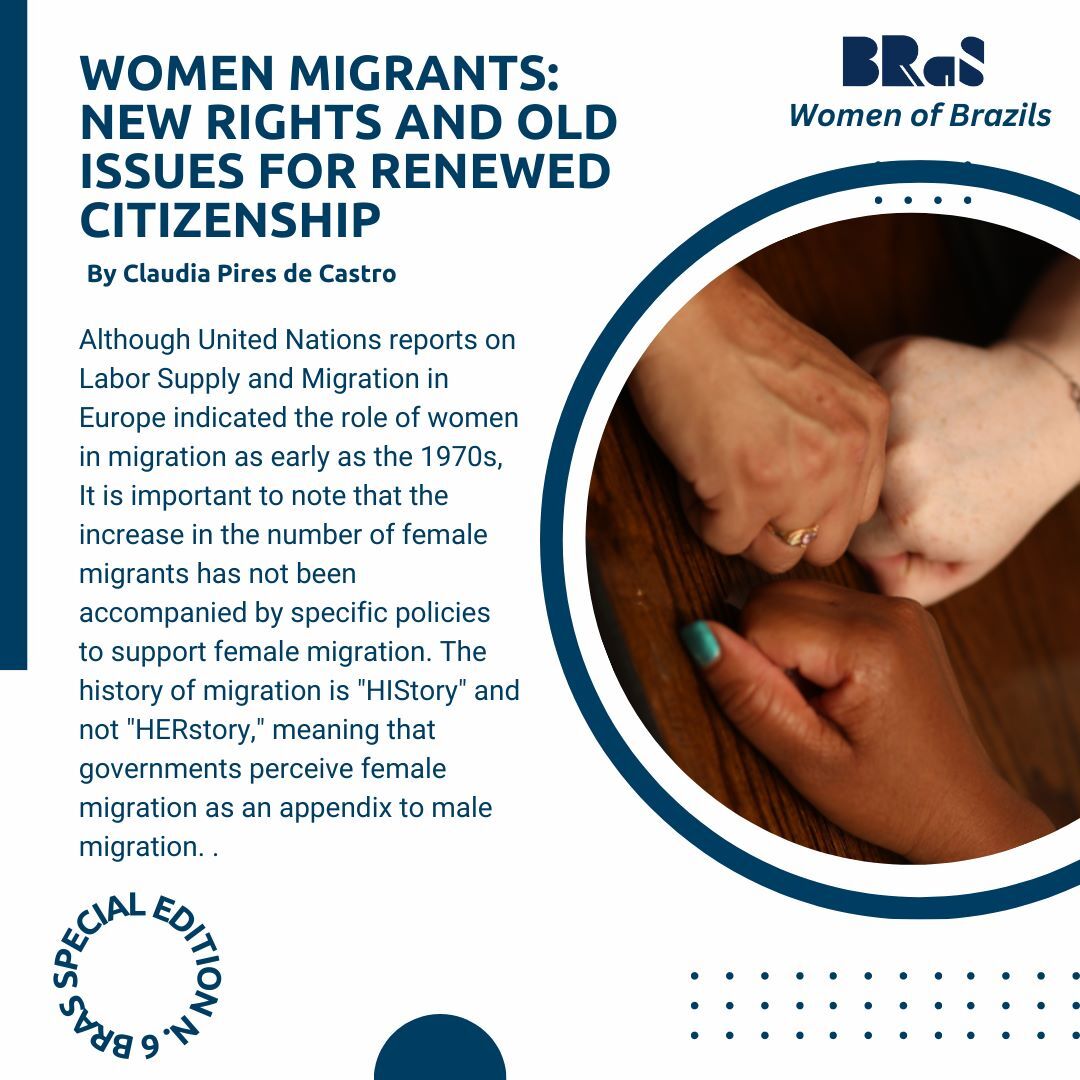by Luiza Chamon Pardim*, Claudia Pires de Castro** and Helena Vetorazo***
Reviewed by Matheus Lucas Hebling
The Charter of the United Nations, drafted in 1945, represents the foundational document of the United Nations (UN) and reaffirms the commitment to defend human rights, including the establishment of gender equality as a fundamental right. However, the promotion of women’s rights required an extensive period and various strategies of political engagement with governments and international organizations in different spaces of discussion in the local and global political arena. In this process, gender issues were progressively incorporated into the global human rights agenda, following a specific visibility regime, according to the context and force configurations among the different political actors, with emphasis on the role of women themselves.
Some achievements were extremely significant in this process, including the creation in 1946 of the Commission on the Status of Women (CSW), a United Nations commission dedicated to monitoring the situation of women, promoting, informing, and monitoring issues related to women’s political, economic, civil, social, and educational rights, highlighting the need for more careful attention to this segment of the global population. In 1948, the CSW played an important role in shaping the Universal Declaration of Human Rights, keeping the perspective of equality between men and women explicit, in contrast to the implicit idea that “man” means “humanity.” According to Guarnieri (2010), in the years following its creation, the CSW worked tirelessly in the elaboration of diagnoses and documents that were fundamental to the consolidation of a gender perspective in the context of human rights.
Another significant milestone was the creation of the Convention on the Elimination of All Forms of Discrimination Against Women (CEDAW), an international treaty adopted by the United Nations General Assembly in 1979 and described as an international bill of rights for women. The CEDAW came into force on September 3, 1981. Although Brazil signed the treaty in the year of its entry into force, it was only approved by the National Congress in 1983, with reservations in some paragraphs, and came into force on March 2, 1984. It was only in December 1994 that the CEDAW was fully accepted.
In Brazil, a fundamental milestone was the emergence of the Lobby do Batom (Lipstick Lobby), a movement composed of teachers, doctors, journalists, and women from other professions that conferred action and feminine articulation in the Constituent Assembly, where out of the 559 deputies elected by direct vote in 1966, only 26 were women. The female constituents joined together to achieve their common demands, such as the expansion of civil, social, and economic rights of women, the definition of the principle of non-discrimination based on sex and race-ethnicity, equality of rights and responsibilities in the family, the prohibition of discrimination against women in the labor market, and equal legal rights between men and women, among others.

Continuing the discussion on Brazil, it is of utmost importance to highlight the unanimous approval by the National Congress of Maria da Penha’s law (Law 11.340) in 2006. Maria da Penha’s law was innovative in many aspects, as it created mechanisms for the prevention and combat of domestic and family violence against women, which did not yet exist in the Brazilian legal system.
According to the National Human Rights Ombudsman, until July 2022, in Brazil, there were 31,398 reports of domestic violence against women and 169,676 violations of human rights in situations of domestic violence. Although the Brazilian legislative branch has passed Law 13,104/2015, also known as the Feminicide Law, human rights violations are recurrent, indicating that there is still a long way to go for the effective realization of women’s rights in the country.
All of the aforementioned milestones are extremely important and relevant in the fight for women’s rights. However, the data from the National Human Rights Ombudsman presents a grim reality. Women’s rights only become effective and fair when we understand that there is a diversity of women. A woman is not universal. It is multiplicity, collectivities, and singularity, and women’s rights must, therefore, be seen and applied.
When we talk, for example, about Maria da Penha’s law, considered by the UN as one of the worldly examples regarding the combat of violence against women, how do indigenous women access the Protective Measures provided by the law? The intention here is not to deny the relevance and importance of the law, which brought numerous protections to women but to demonstrate that it needs adjustments to break this idea of universal women.
In addition to the Maria da Penha Law, women’s rights need to cross all the branches of law. Just like women, women’s rights should also be multiple.
Today, in Brazil, we have the “Protocolo para Julgamento com Perspectiva de Gênero”, development by Conselho Nacional de Justiça (CNJ), which deals with various branches of the law, with a gender perspective. This was one more step so that Law and Justice can eventually really walk side-by-side. Such a thing will only be possible when the Law is seen from the perspective of gender, race, ethnicity, class, sexuality, generation, and culture.
If you are interested in learning more about women’s rights in Brazil, I recommend the books “Lei Maria da Penha e o Projeto Jurídico Feminista Brasileiro – Fabiana Cristina Severini”, “Por um Feminismo Afro Latino Americano – Lélia Gonzalez”, “A Situação dos Direitos Humanos das Mulheres Negras no Brasil: violência e violações – Géledes Instituto da Mulher Negra e Criola Organização de Mulheres Negras” and the own “Protocolo para Julgamento com Perspectiva de Gênero”.
References
GUARNIERI, T. H. Os direitos das mulheres no contexto internacional da criação da ONU (1945) à Conferencia de Beijing (1995). Revista Eletrônica da Faculdade Metodista Granbery, n. 8, 2.
* Luiza Chamon Pardim is a lawyer and a specialist in Intellectual Property and the Right Culture, Specialist in Women’s Rights.
** Claudia Pires de Castro has completed a Master of Arts (MA) degree in Journalism and Communication Sciences from the University of Vienna, and is currently a Master’s student in Political Science at the same university. Additionally, she also holds a Postgraduate degree in Marketing from the Higher School of Advertising and Marketing (ESPM). She is a member of the Research Group DIASPOTICS: Migrações Transnacionais e Comunicação Intercultural (UFRJ), a member of the Research Group Labhima: Laboratório de História e Meio Ambiente – Labhima (UNESP) and Head of BRaS Research Group Social Media Studies.
** Helena Vetorazo is a a doctoral student in Social Sciences in Education at the University of Campinas, and holds a MA in Social Sciences from the University of Campinas. She is a member of the Research Group on Sociocultural Differentiation from the University of Campinas, a member of the Brazilian Association for the Teaching of Social Sciences (ABECS) and a member of BRaS Research Group Social Media Studies.






